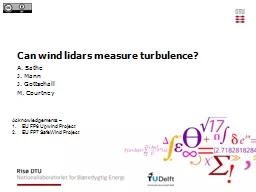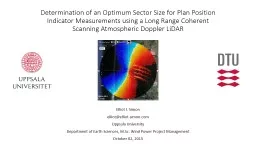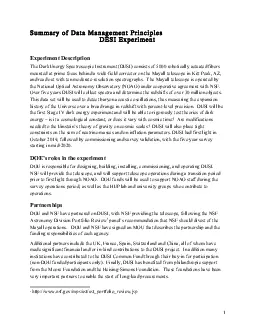PPT-Lidars Lifted: The Østerild Balconies Experiment
Author : eatfuzzy | Published Date : 2020-07-04
Elliot Simon lt ellsimdtudk Observations lead the way Inflow measurements from Doppler lidar give temporal and spatial information about wind field behaviour
Presentation Embed Code
Download Presentation
Download Presentation The PPT/PDF document "Lidars Lifted: The Østerild Balconies E..." is the property of its rightful owner. Permission is granted to download and print the materials on this website for personal, non-commercial use only, and to display it on your personal computer provided you do not modify the materials and that you retain all copyright notices contained in the materials. By downloading content from our website, you accept the terms of this agreement.
Lidars Lifted: The Østerild Balconies Experiment: Transcript
Download Rules Of Document
"Lidars Lifted: The Østerild Balconies Experiment"The content belongs to its owner. You may download and print it for personal use, without modification, and keep all copyright notices. By downloading, you agree to these terms.
Related Documents














